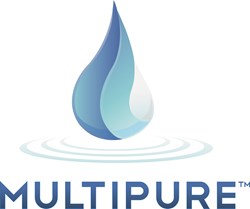You have no items in your shopping cart.
What are cyanotoxins?
The answer is pretty straight forward: cyanotoxins are metabolites of cyanobacteria.
Okay, you may say, but then again, what on earth is a cyanobacteria?
Well, cyanobacteria is a fancy name for blue-green algae, which are some of the oldest forms of life on earth.
Cyanobacteria are found virtually everywhere, as they occur naturally in all surface waters, but they're mostly living long and prosper lives in the ocean and lakes. Under certain conditions, i.e. plenty of nutrients and warm water, cyanobacteria may grow rapidly and, let's say excessively, forming harmful algal blooms, also known as HABs.
Cyanotoxins are produced by those HABs, which are thriving during late summer and fall period.

HABs can be observed as thick green, blue (hence the blue-green algae thing) or brown mats floating in the water. A water heavily infested with cyanobacteria and its byproducts (cyanotoxins) has an unpleasant odor and taste, even after the respective water was processed by a water treatment facility. In some cases, water becomes so polluted with cyanotoxins, that it may become harmful to both animals and humans drinking it.
That thick scum in the picture above, which looks like green oil paint, may grow 2 to 6 inches thick in lakes and rivers, and wildlife drinking the water in that river will die rapidly and horribly. And that's because cyanotoxins are very powerful natural poisons, which may cause death by respiratory failure in humans. Cyanotoxins include potent hepatotoxins (they affect the liver), neurotoxins (affecting the brain and the nervous system), cytotoxins (effects similar to venom) and endotoxins. To make a long story short, mild exposure to cyanotoxins can result in all sorts of nasty things, ranging from hay fever symptoms to gastro intestinal problems and even neurodegenerative diseases, such as Parkinson's or Alzheimer's. Heavy exposure may be fatal.

How can you be exposed to cyanotoxins?
There are several scenarios for people getting exposed to those nasty bugs, including ingesting fish/shellfish from waters infested with cyanotoxins, making skin contact via swimming/showering with water containing cyanotoxins, or, drinking water infested with cyanotoxins. The thing is, according to the EPA, cyanotoxins are already a matter of public concern, as they've been identified as contaminants pending future regulatory action.
This means that cyanobacteria in Americans' water supply is a clear and present danger nowadays, due to a combination of factors, including agricultural runoff and weather conditions, which favor the apparition of HABs in certain water supplies.
However, the EPA failed so far in putting a national cyanotoxins regulatory standard into place. The free market's response was that a number of individual states have already implemented guidelines for these toxic metabolites. For example, Ohio already requires monitoring for cyanotoxins in municipal waters by water utility companies since 2016, while a recent Emergency Alert in Salem, Oregon, advised the population to avoid consuming tap-water, out of fear of being contaminated with those pesky cyanotoxins. Which means they are monitoring too. The same "do not drink tap water" advisory was released by a water utility company in Michigan, after Lake Eerie was contaminated by a toxin producing algal bloom back in August 2014. Half a million Toledo residents were affected by this issue.

It's worth mentioning that certain categories in the general population are more susceptible of being harmed by cyanotoxins in tap water, including pregnant women, nursing mothers, the elderly, immune-compromised people, and those on dialysis treatment.
How do you know if there are cyanotoxins in your drinking water?
The answer is pretty complicated. Generally speaking, the people are expecting the "government" to do the job, but as I already told you, there is no national standard/regulation from US EPA with regard to monitoring municipal waters for cyanotoxins. Also, depending on a number of factors, the likes of climate, the source of your water, and the potential for pollution, your local water company may or may not monitor your tap water for cyanotoxins. You can always contact your water utility company and ask them for details.
With all these facts in mind, it comes as a no-brainer that cyanotoxins are a real issue, and dealing with those pesky bastards should rank high on one's priority list.
The good news
Fortunately, there have been numerous studies proved beyond "reasonable doubt" that cyanotoxins can be removed from tap water by state of the art water filtering systems, like Multipure's Aqualuxe, Aquaperform, Aquaversa, or Aquadome.
How come, you asked? Well, most cyanotoxin species are removed by micro-meso-macroporous carbon-filters, and fancy talk aside, all the aforementioned Multipure Drinking Water Systems are certified to reduce the concentration of those toxins in your tap water. And that's due to Multipure's patented/proprietary solid carbon block technology, the best on the market. Seriously, I am not kidding. For more info on solid carbon block water filtration systems, read this piece: How a Solid Carbon Block Filter Works.
Also, Multipure's water filters are NSF/ANSI Standard 53 (health effects) certified, and if you're afraid of pathogens in the water, try the Aqualuxe, which comes with NSF certification for Protocol P201, i.e. it's guaranteed to remove bacteria and viruses (the only solid carbon block filter NSF Certified for this).
The morals of the story:
-Yes, cyanotoxins are real a problem and a potential health risk, especially for vulnerable categories of population
-Yes, Multipure's solid carbon block filter technology is highly efficient with regard to reducing the concentration of cyantoxins in the water
-Multipure’s Aqualuxe has been independently tested and verified to treat microcystins (a cyanotoxin) in drinking water, and all Multipure’s carbon filters meet the EPA requirements to treat cyanotoxins in the water









← Older Post Newer Post →
0 comments